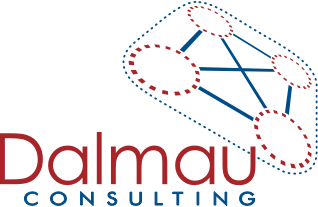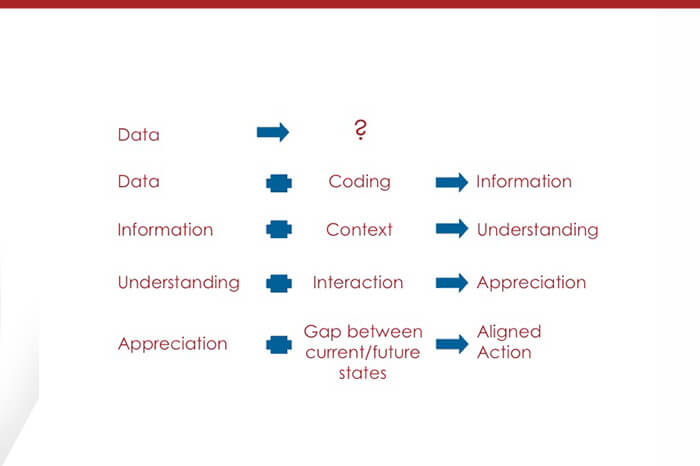The importance of providing context and an opportunity to interact cannot be under-estimated if you are to build understanding and will to act amongst the people you lead.
So many leaders seem to think that if they have told or shown information then it should lead to aligned action. They then are dismayed when this does not happen. “I told them, I sent them emails, I even put it in a power point presentation for them, but they dont seem to get it. They still do their own thing!”
At the heart of this sort of thinking is a failure to understand what it actually takes when you communicate with others to ensure they are prepared to go the next step and work together in an aligned manner to the goal set.
As the diagram illustrates
- Raw data is just that – data – and alone it has little meaning, and no power to stimulate action.
- If this data is presented (coded) in a report, email, diagram or some other form it becomes information. But this, will not guarantee action, and this is the point at which many become bewildered.
- It is not until context is provided for the information that we get understanding. Information in context generates understanding.
- If people have the opportunity to interact with the information they have been given, through talk and conversation, testing and shaping their understanding, then this leads to appreciation of the issue. This appreciation has two components, a cognitive element and a kinesthetic element; put simply, head and gut. You see this so often when someone says “Now I get it” and you notice them sigh or move at the same time in some way.
- With an appreciation of the issue combined with a clear understanding of the gap between the current state and desired future state (where we are versus where we need to be) then aligned action results.
Only when you have got to Step 5 can you have confidence that the communication process has been effective. Perhaps a better word might be engagement.
Communicating with someone is not a matter only of providing information. It is really about taking the time to set the context, allow the others to test and interact with the information and one another, and set it against a clear picture of the difference between the current and desired future states.






